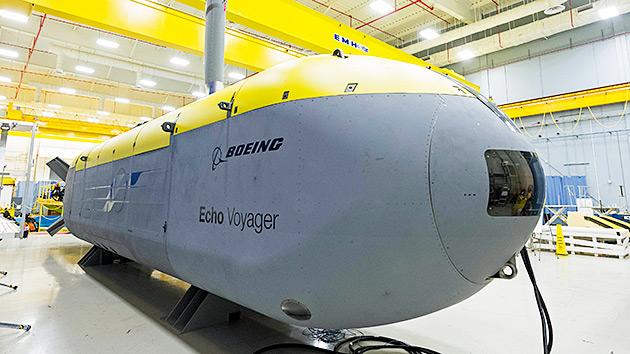In a modernization effort, the US Navy is adding a fleet of autonomous submarines with the purchase of four of Boeing’s Orca Extra Large Unmanned Undersea Vehicles (XLUUVs) that will become multi-mission for the service, according to the US Naval Institute.
Last Wednesday, the Navy awarded Boeing a $43 million deal to manufacture four of the 51-foot Orca XLUUVs capable of traveling 6,500 nautical miles unaided.
The service is eyeing the submarine for “robot wolfpacks” of remotely-operated vessels to conduct anti-submarine warfare, electronic warfare, mine countermeasures, and strike missions.
“We are pleased with the Navy’s decision to award Boeing a contract to build and deliver four Orca Extra Large Unmanned Undersea Vehicles, and are committed to providing this important autonomous undersea capability to meet the Navy’s unique mission needs,” the company said in a Thursday statement to USNI News.
The Orca is a fully autonomous diesel-electric submarine launched and recovered from a naval port. With a range of 6,500 nautical miles, the vessel can run for weeks at a time. The sub is enormous, in terms of a robot submarine, measures 51 by 8.5 by 8.5 feet and weighs 50 tons.
The sub features a high-tech inertial navigation system, depth sensors, and can surface to transmit data back to base. The vessel can dive to a maximum depth of 11,000 feet and has a top speed of eight knots.
One crucial piece of the sub is the payload system that allows it to haul up to eight tons in an internal cargo bay that measures 34 feet.
Popular Mechanics points out, the sub’s modular design and cheap price tag make the vessel a potential game-changer for the Navy.
Orca could even pack a Mk. 46 lightweight torpedo to take a shot at an enemy sub itself. It could also carry heavier Mk. 48 heavyweight torpedoes to attack surface ships, or even conceivably anti-ship missiles. Orca could drop off cargos on the seabed, detect, or even lay mines. The modular hardware payload system and open architecture software ensures Orca could be rapidly configured based on need.
This sort of versatility in a single, low-cost package is fairly unheard of in military spending. The nearest rough equivalent is the Navy’s Littoral Combat Ship, which costs $584 million each and has a crew of 40. While LCS is faster, has the benefit of an onboard crew, and carries a larger payload, Orca is autonomous—and cheaper by orders of magnitude.
The purchase of these robot subs comes amid a push into autonomous vessels for the service. Last month, the Navy’s autonomous Sea Hunter ship, conducted its first surveillance mission from San Diego to Pearl Harbor, Hawaii, and back without a crew onboard.
via ZeroHedge News https://ift.tt/2TbmlON Tyler Durden


